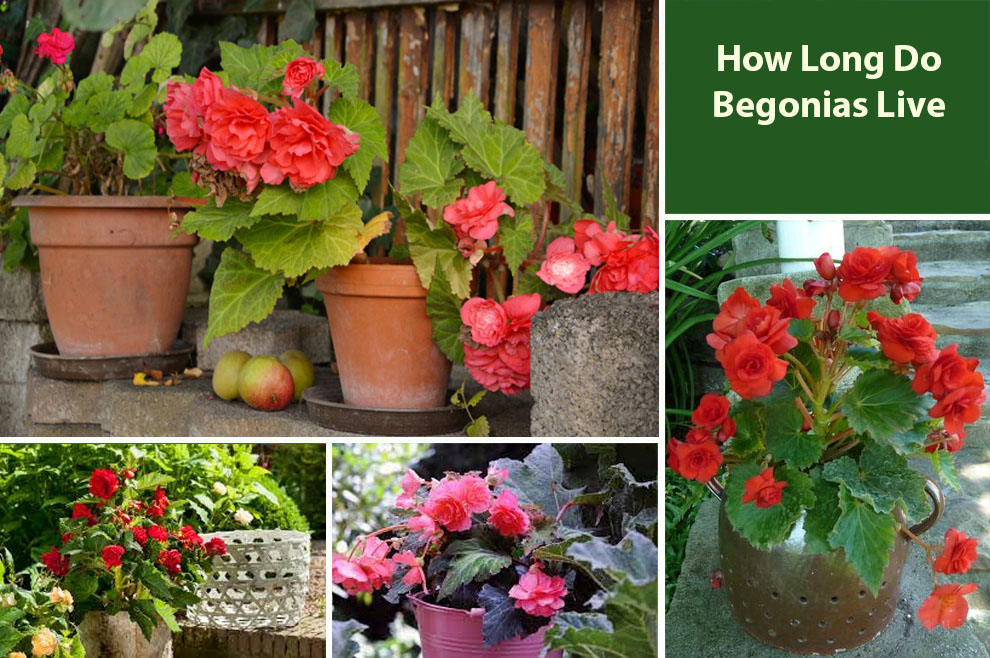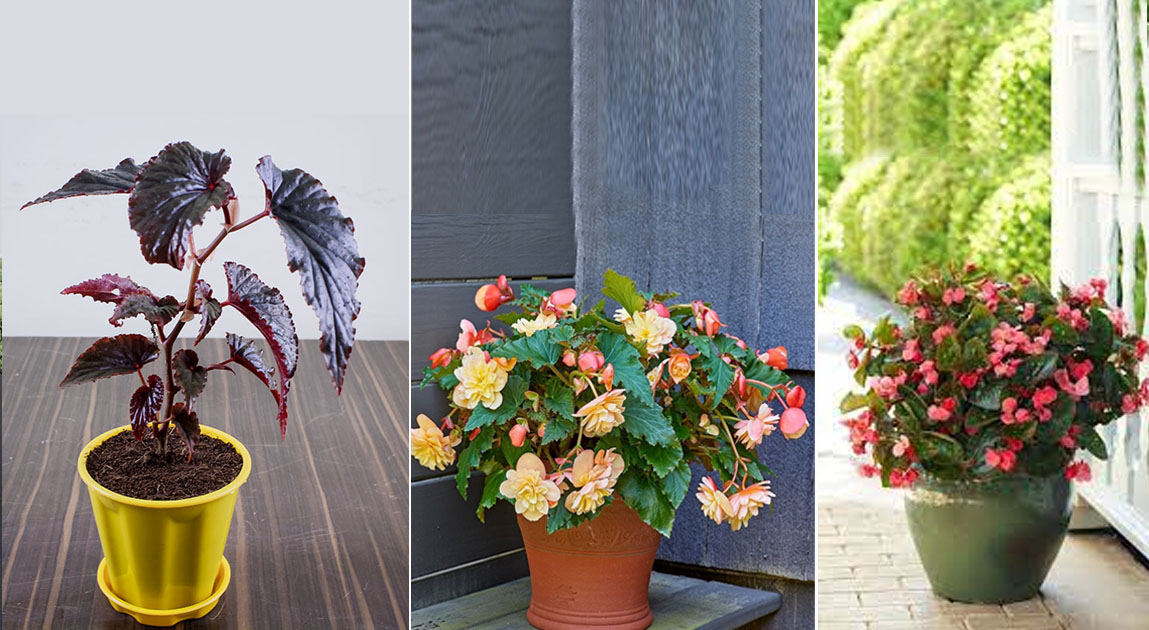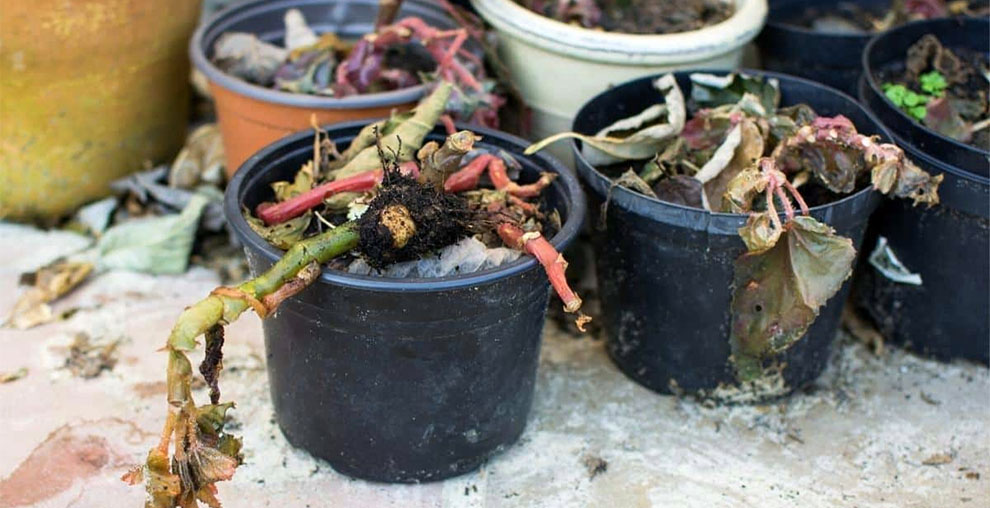Begonias Lifespan: How long Do They Live?
Begonias do not have a very long lifespan. They are mostly annuals and live for a year. Some begonia varieties may be perennial, but they too do not live for more than 2-3 years.

Begonias, known for their captivating foliage and stunning blooms, have become beloved plants among gardeners and indoor plant enthusiasts alike. These versatile plants offer a wide range of varieties, each with its unique characteristics and beauty.
Understanding the lifespan and blooming duration of begonias can be vital in ensuring their success in gardens, landscapes, or indoor settings.
How long do begonias live can vary depending on various factors, including the specific variety, growing conditions, and care provided.
While some begonias are grown as annuals, completing their life cycle within a single growing season (one year), others are perennials, capable of living for multiple years (two – three) with proper care.
When it comes to blooming, begonias often offer a generous display of their captivating flowers. Compared to some other plants, begonias have a relatively long blooming period but a short lifespan.
Depending on the variety and environmental conditions, begonias can produce blooms that last for several weeks to several months, adding a burst of color and charm to gardens, borders, hanging baskets, and indoor spaces.
By understanding begonias’ lifespan and blooming duration, gardeners can effectively plan for their care, ensuring optimal conditions and appropriate expectations for these delightful plants.
Whether grown as annuals or perennials, begonias have the potential to bring joy and visual splendor to any landscape or indoor garden.
Will Begonias Come Back Each Year – Are They Perennials or Annual?
The classification of begonias as perennials or annuals depends on the specific variety and the climate in which they are grown. In short, they can be both.
Begonias encompass a wide range of species and hybrids, each with its growth habit and lifespan.
A. Annual begonias
Some begonias are grown as annuals, meaning they complete their life cycle within one growing season. These begonias bloom, produce seeds, and then naturally die off in a year.
Common examples of annual begonias include wax begonias (Begonia semperflorens) and some bedding begonias.
B. Perennial begonias
Many begonias are perennials, meaning they can live for multiple years under the right conditions. Perennial begonias can regrow from the same root system year after year and may continue to produce flowers and foliage.
Examples of perennial begonias include rhizomatous begonias, rex begonias, and some tuberous begonias.
It’s important to note that even perennial begonias may require special care in colder climates, as they may not survive frost or freezing temperatures.
In such regions, gardeners often treat begonias as annuals or lift and store tubers during winter to protect them from cold damage.
Therefore, before selecting begonias for your garden, it is advisable to check the specific variety’s growth habit and suitability for your climate to determine whether they will return each year as perennials or if they need to be replanted annually as annuals.
Here is a quick guide on how to grow begonias.
Begonias Lifespan Indoors and Outdoors
The lifespan of begonias can vary depending on whether they are grown indoors or outdoors.
Here are some insights into the lifespan of begonias in each setting:
A. Outdoors
Begonias grown outdoors have varying lifespans depending on the region and climate. In temperate climates, where winters are mild, some begonias can survive and continue to bloom as perennials.
Tuberous begonias, for example, can live for multiple years if lifted and protected during winter frost.
In areas with colder winters, begonias are often treated as annuals (with a lifespan of 1 year) and need to be replanted each year to enjoy their blooms throughout the growing season.
However, some hardy begonias such as Begonia grandis and Begonia evansiana tend to live for up to 5 years.
B. How Long Do Begonias Live Indoors
When properly cared for, begonias can thrive and live for several years as indoor plants.
With adequate lighting, appropriate watering, and suitable indoor conditions, begonias can maintain their beauty and bloom for an extended period.
Indoor begonias, such as rex begonias or fibrous begonias, can live for 2-3 years with the right care. Providing the ideal indoor environment, including proper humidity levels, temperature control, and sufficient light, can help promote the longevity of indoor begonias.
It’s important to note that individual plant health, specific varieties, and the quality of care provided greatly influence the lifespan of begonias, whether grown indoors or outdoors.
By providing optimal growing conditions and attentive care, gardeners can enhance the lifespan and overall health of their begonias, regardless of the setting.
Factors Affecting Begonias Lifespan
The lifespan of begonias can be influenced by several factors. Proper care and maintenance play a significant role in determining how long a begonia will live.
Factors such as sunlight exposure, watering practices, soil quality, temperature, and humidity levels can impact their longevity.
Additionally, the specific begonia variety or cultivar, susceptibility to diseases and pests, and the overall health of the plant at the time of purchase or propagation can also affect its lifespan.
Providing optimal growing conditions and addressing any issues promptly can help extend the lifespan of begonias.
The Lifespan of Different Begonia Varieties

The lifespan of different begonia varieties can vary. Here are some general approximations for their lifespan:
- Rex begonias: Rex begonias are typically grown for their stunning foliage. With proper care, they can live for 2-3 years.
- Tuberous begonias: Tuberous begonias are known for their vibrant flowers. They are usually treated as annuals or perennials in temperate climates. In ideal conditions, they can live for 1-3 years.
- Fibrous begonias: Fibrous begonias, including wax begonias (Begonia semperflorens), are often grown as annuals. However, with adequate care and protection from frost, they can live for more than one season.
- Rhizomatous begonias: Rhizomatous begonias, such as the popular Begonia rex, have a longer lifespan compared to other varieties. With proper care, they can live for 5-10 years or even longer.
How Long Do Begonias Live to Keep Blooming?
The duration of begonia blooms varies depending on the specific variety and conditions provided. Generally, begonias have a relatively long flowering period compared to some other plants. The flowering season can last anywhere from several weeks to several months.
- Tuberous begonias, known for their showy and vibrant flowers, can have extended flowers continuously throughout the summer, typically from late spring to early fall.
- Fibrous begonias, including wax begonias (Begonia semperflorens), also have a prolonged blooming period. With proper care and deadheading (removing spent blooms), they can continuously produce flowers from spring to fall.
- Rhizomatous begonias, such as Begonia rex, are primarily grown for their foliage. While their flowers may not be as prominent, they can still bloom intermittently throughout the year.
It’s important to note that environmental factors, such as light exposure, temperature, and humidity, can influence the duration and intensity of begonias’ lifespan and its blooms.
Related: Best fertilizers for Begonias
Signs of A Dying Begonia

A dying begonia plant may exhibit several signs that indicate its decline. Here are some common signs to look out for:
- Wilting: The leaves of a dying begonia plant may start to droop and wilt, even if the soil is adequately moist. Wilting can occur due to various reasons, such as root rot or lack of water absorption.
- Yellowing leaves: The leaves of a dying begonia may turn yellow and eventually brown. This can be a sign of nutrient deficiencies, overwatering, or fungal infections.
- Leaf spots or discoloration: Dying begonias may develop brown or black spots on their leaves, indicating the presence of diseases like powdery mildew or botrytis blight. These spots may spread and cause further damage to the plant.
- Stunted growth: A dying begonia may stop growing altogether or exhibit significantly slowed growth. This can be attributed to environmental stress, inadequate light, poor soil conditions, or pest infestations.
- Root rot: If the roots of a begonia plant are mushy, dark-colored, and emit a foul odor, it is likely to experience root rot. Overwatering or poor drainage can lead to root rot, causing the plant to deteriorate.
- Lack of flowering: A dying begonia may stop producing flowers or have fewer blooms than usual. Stress, improper care, or unfavorable environmental conditions can affect begonias’ lifespan and the plant’s ability to flower.
- Brittle stems: The stems of a dying begonia may become weak, brittle, or even start to rot. This can occur due to insufficient light, overwatering, or diseases.
If you notice several of these signs in your begonia plant, it is important to assess the underlying causes and take appropriate actions to save the plant, such as adjusting the watering routine, improving soil drainage, providing adequate light, or treating pests or diseases.
